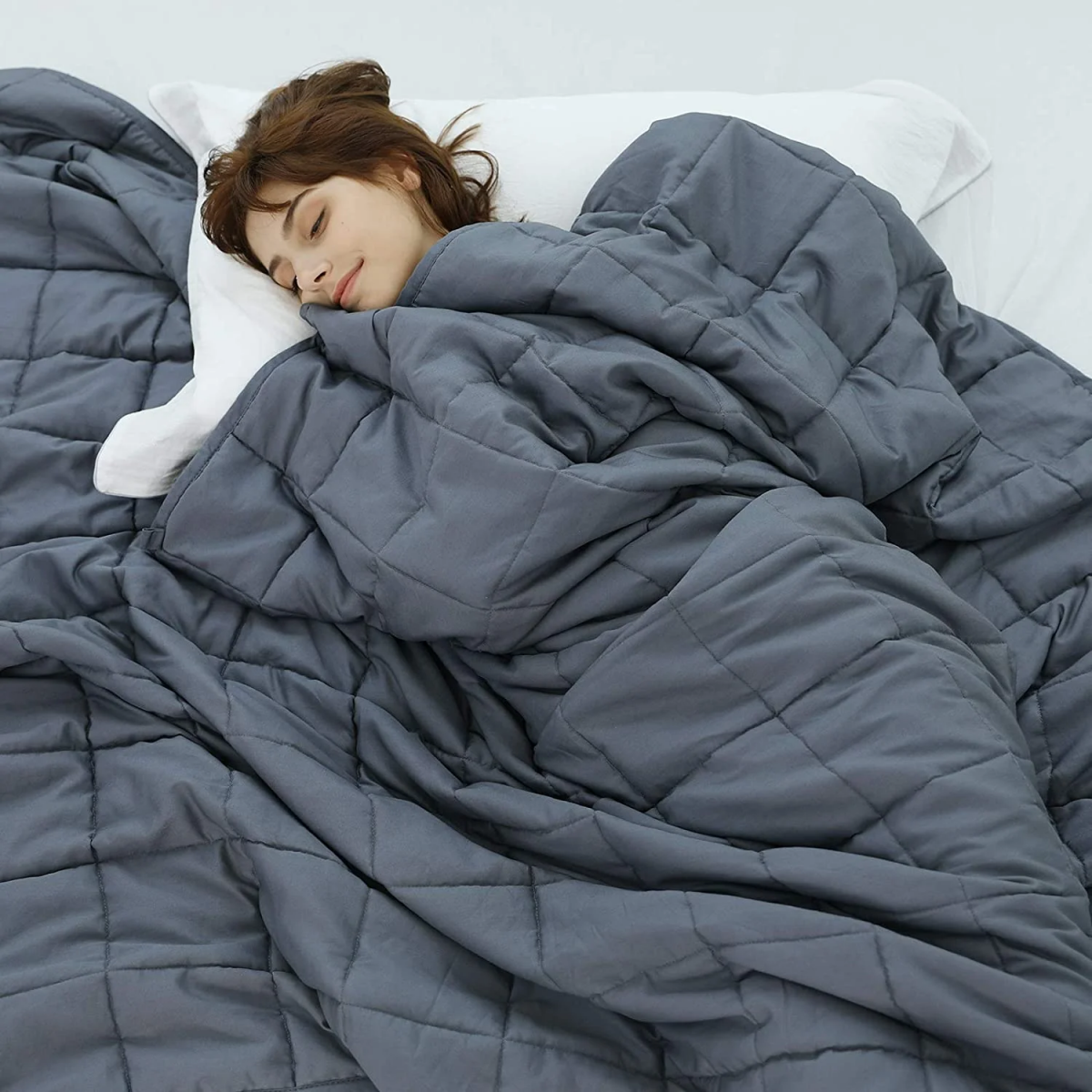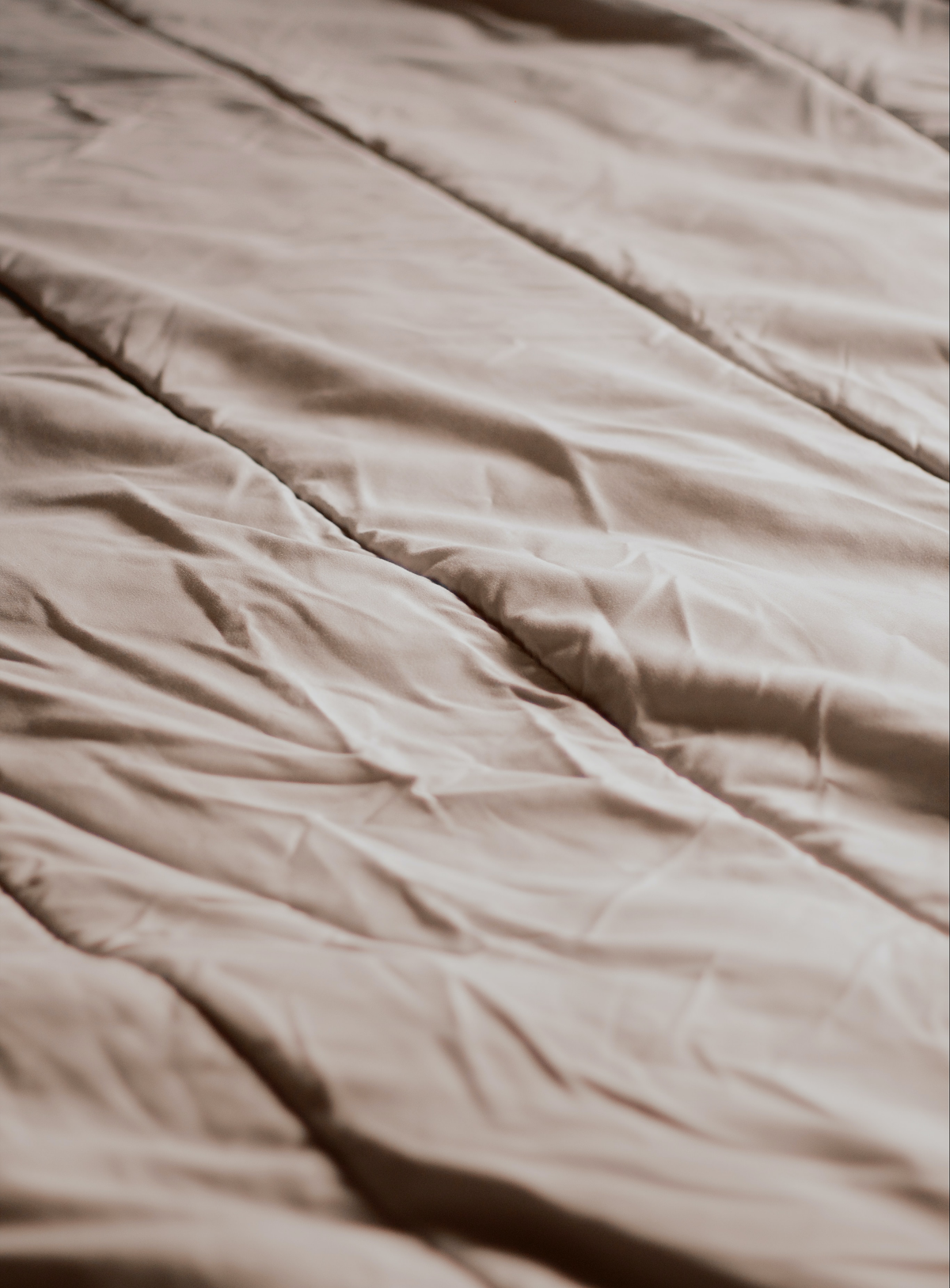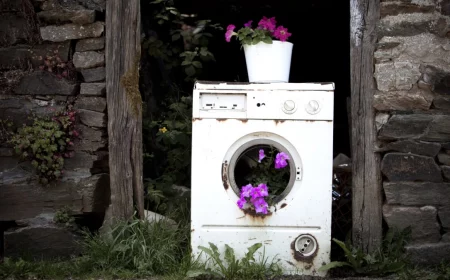How To Make A Weighted Blanket: A Simple Step-by-Step Guide
Weighted blankets have become a significant trend in recent years and it’s no surprise. They are highly sought after for their stress-relieving and sleep-improving qualities. These blankets are distinguished by their heavier weight compared to standard bedding. However, unlike a regular blanket, they utilize a form of therapy known as deep pressure stimulation. This gentle, consistent pressure across the body has been likened to a comforting embrace, offering therapeutic benefits. Today, we will show you how to make a weighted blanket of your own. Making your own blanket allows for customization in weight and design, ensuring it perfectly suits your individual needs. So, whether you’re looking to ease anxiety, improve sleep, or simply enjoy the process of creating something by hand, let’s see how to make this magical blanket.
Weighted blankets have become a significant trend in recent years
In this article
What Is a Weighted Blanket?
Weighted blankets operate on the principle of applying uniform, gentle pressure across the body. This simulates the sensation of being held or hugged. This sensation is more than just comforting. It’s therapeutic as it triggers a relaxation response in the body. Such blankets are particularly beneficial for individuals who struggle with stress, anxiety, insomnia, or sensory disorders. The effectiveness of a weighted blanket is largely attributed to its filling, which typically consists of materials like fine glass beads or plastic pellets. Additionally, the fabric of the blanket plays a vital role in comfort and durability. Fabrics like cotton are popular choices due to their softness and breathability, making them gentle against the skin. The combination of the right fabric and filling can result in a blanket that not only provides the desired therapeutic pressure but also feels luxurious and comfortable.
Weighted blankets operate on the principle of applying gentle pressure across the body
How To Make a Weighted Blanket
A weighted blanket is made by creating a series of pockets within the fabric, which are then filled with small weighted materials, such as plastic pellets or glass beads. The process is typically pretty simple and quite similar to making a normal blanket or comforter. But the result is much better! A weighted blanket will provide you gentle, even pressure that helps soothe the mind and keeps you warm.
The process is typically pretty simple
Choose the right materials
Selecting the appropriate materials is a critical step in crafting а weighted blanket that is both effective and comfortable. The fabric of the blanket needs to be soft and durable, able to withstand the additional weight without tearing. The filling, which gives the blanket its weight, is commonly composed of either glass beads or plastic pellets. Glass beads are preferred for their smaller size, which contributes to a smoother, more even distribution of weight. They are also typically more durable and less likely to degrade over time compared to plastic pellets. The size of the blanket should also be tailored to the individual, ideally covering the user’s body completely for maximum comfort and efficacy. Additionally, think about practicality, particularly regarding cleaning and maintenance. Opting for a fabric that is machine washable or using a removable cover can make your weighted blanket easier to keep clean and maintain.
Selecting the appropriate materials is a critical step in crafting the perfect weighted blanket
Determine the ideal weight
The ideal weight of a weighted blanket varies depending on the individual’s body weight. A common guideline is for the blanket to be approximately 10% of the user’s body weight, plus one or two pounds. For example, a person who weighs 150 pounds might find a 15 to 17-pound blanket comfortable. This guideline ensures that the blanket provides effective pressure without being too heavy. It’s important to choose a weight that feels comfortable and soothing, without causing discomfort or difficulty in moving under the blanket. Personal preference and comfort should always be considered when selecting the weight of the blanket.
It’s important to choose a weight that feels comfortable and soothing
Prepare the fabric
Begin by selecting a fabric that suits your needs for comfort and aesthetic. Measure and cut two equal-sized pieces, based on your desired blanket dimensions. Ensure the cuts are straight and even, as this will be the foundation of your blanket. The choice of fabric can range from soft cotton to luxurious minky, depending on your preference for texture and warmth. For colder climates, a denser fabric like flannel can provide extra warmth.
Begin by selecting a fabric that suits your needs for comfort and aesthetic
Adding the weights
After cutting the fabric, lay out one piece on a flat surface. Mark a grid pattern across it, dividing the blanket into evenly sized cells. These cells will hold the weights, so it’s important for them to be uniform for balanced weight distribution. Sew along the marked lines, creating pockets, but leave one side of each cell open for inserting the weights. This process requires precision to ensure that each pocket is securely made and consistent in size.
Mark a grid pattern across it
Inserting the weights
Begin filling each pocket with the chosen weights. Carefully distribute them evenly. The amount of weight per pocket will depend on the total weight you’ve determined for the blanket. Once you’ve filled a pocket, carefully sew the open side shut, ensuring the weights are securely enclosed. This step might be time-consuming but is crucial for the blanket’s effectiveness and durability.
Begin filling each pocket with the chosen weights
Assembling the blanket
Now, place the second piece of fabric over the weighted layer, aligning the edges with the right sides facing each other. Sew around the perimeter, leaving a gap for turning the blanket right side out. This creates the final form of your blanket. After turning it right side out, carefully stitch the opening closed. You might choose to add additional stitching or quilting to reinforce the blanket’s structure and enhance its appearance.
Place the second piece of fabric over the weighted layer
Customize it
Personalizing your weighted blanket adds a unique and meaningful touch to this therapeutic item. Embroidery, for instance, can be a wonderful way to add a personal message, a favorite quote, or a simple but elegant design. This can be especially meaningful if the blanket is intended as a gift. Additionally, consider sewing on patches or appliques that reflect personal interests or memories. Another aspect of customization is adapting the blanket to different seasons. For summer, a lighter, more breathable fabric like cotton can provide comfort without excessive warmth. In contrast, for winter, a thicker, warmer fabric such as fleece or flannel can be used to provide extra coziness.
Personalizing your weighted blanket adds a unique touch to this therapeutic item
Safety and Usage Tips
Weighted blankets are a wonderful tool for relaxation and stress relief, but they are not suitable for everyone. Caution is advised for very young children or individuals with certain health conditions, such as respiratory or circulatory problems. It’s always best to consult with a healthcare professional if you have concerns. For optimal use, the blanket should be used during rest or sleep, providing a soothing, calming effect. To maintain the quality and longevity of your weighted blanket, follow care instructions diligently, particularly if your blanket includes specific materials or a removable cover. Regular cleaning and proper maintenance will ensure your blanket remains a comforting presence for years to come.
Weighted blankets are a wonderful tool for relaxation and stress relief
FAQs
Is a weighted blanket safe?
Weighted blankets are generally safe for most adults and older children, but they may not be suitable for everyone. They are not recommended for infants, young children, or people with certain health conditions, like respiratory or circulatory problems. The weight of the blanket should not be too heavy to move easily, as it could pose a risk of suffocation, especially for younger children. If you have specific health concerns, such as chronic health issues, it’s advisable to consult with a healthcare professional before using a weighted blanket. When used correctly, weighted blankets can provide comfort and aid in relaxation.
Weighted blankets are generally safe for most adults
Are weighted blankets hot?
Weighted blankets can be warmer than regular blankets due to the added weight and density of the fillings. However, the level of warmth largely depends on the materials used for both the outer fabric and the filling. Fabrics like cotton or bamboo are breathable and can help in regulating temperature, making the blanket less hot. Some weighted blankets are designed with temperature control in mind, featuring moisture-wicking or cooling fabrics for use in warmer climates or for hot sleepers. If overheating is a concern, it’s worth looking for a weighted blanket designed with cooling properties.
Weighted blankets can be warmer than regular blankets due to the added weight
Now you know how to make a weighted blanket? Creating a weighted blanket is not just about crafting a sleep accessory. It’s about designing a tool for better mental health and stress reduction. This DIY project not only leaves you with a functional and therapeutic item but also provides the satisfaction of having made something uniquely tailored to your needs. Whether for personal use or as a thoughtful gift, a homemade weighted blanket can be a source of comfort and calm in the bustling rhythm of life.
Check out this simple tutorial how to make a weighted blanket























